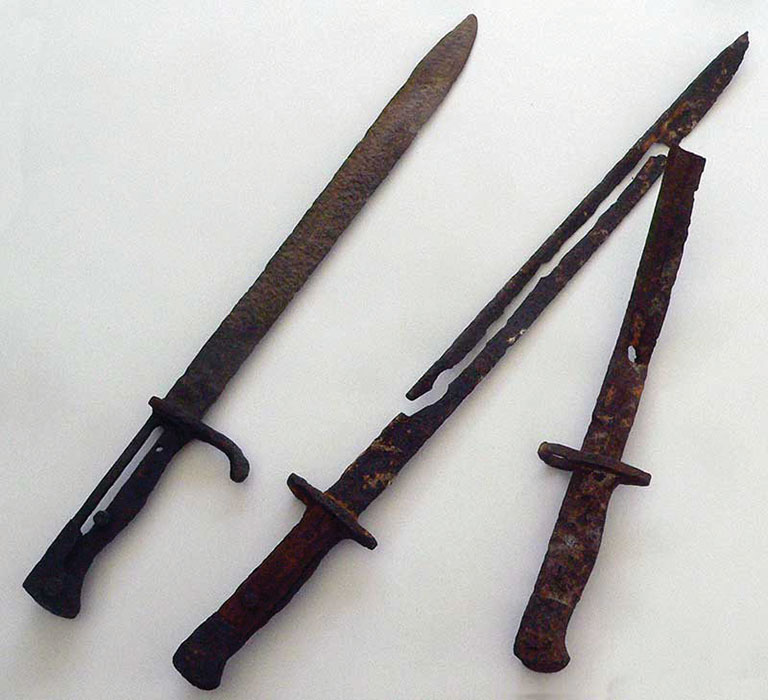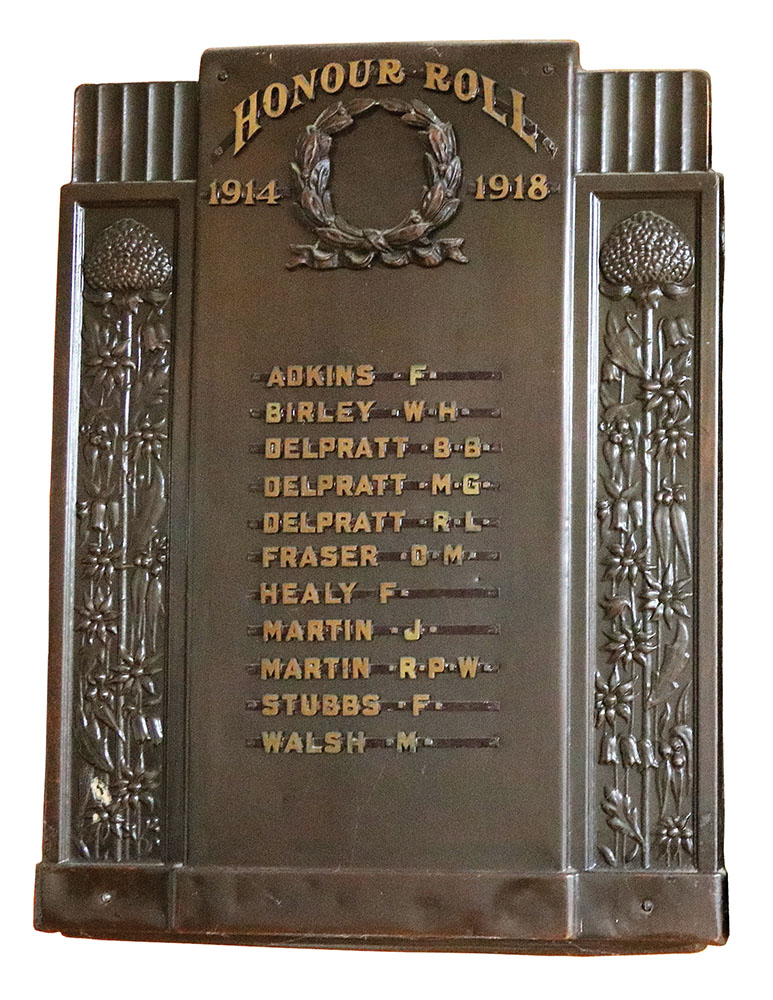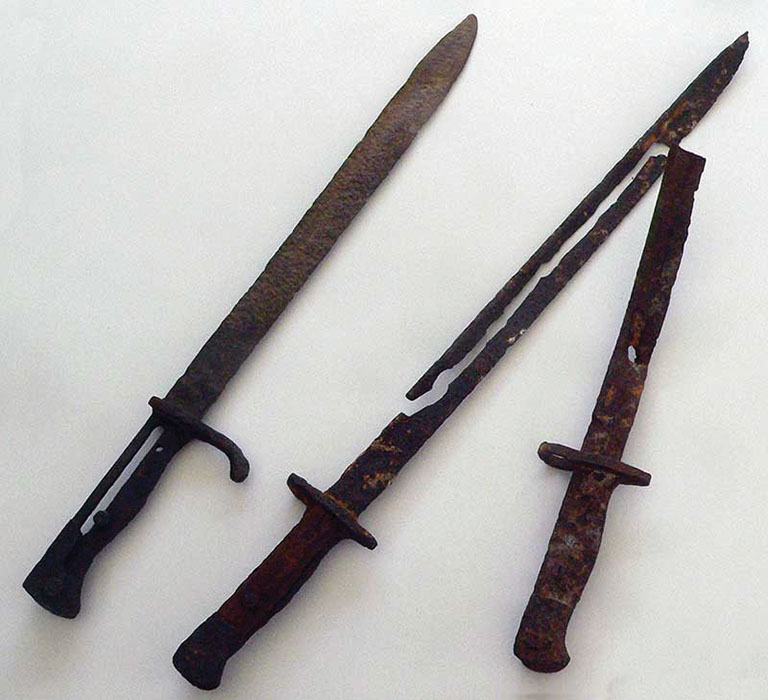History of Tambourine & Surrounding Region – ‘Early Servicemen Of Tamborine’
We are going to take a little break from the ‘Pioneers’ for the moment to take a look at our early armed forces members in honour of Remembrance Day:
“Remembrance Day, also known as Poppy Day, is a memorial day observed by Commonwealth member states on 11 November to recall the end of First World War hostilities (also known as the ‘Great War’) and to honour armed
forces members who died in the line of duty. Hostilities formally ended ‘at the ‘passing’ of the 11th hour of the 11th day of the 11th month’ of 1918, in accordance with the armistice signed by representatives of Germany and the Entente (Allied Nations including Britain, France, Italy and Russia) between 5:12 and 5:20 that morning. Although the armistice, signed on 11 November 1918, ended the actual fighting, the First World War officially
ended with the signing of the Treaty of Versailles on 28 June 1919.”
In the Tamborine Memorial Hall there is board containing an Honour Roll listing servicemen from the Tambourine District who fought in World War I from 1914 to 1918. The names listed on the board include only initials but are: F Adkins, William Henry Birley, Bertram Bernard Delpratt, Maurice George Delpratt, Robert Leuyns Delpratt, Douglas Martin Fraser, Francis Joseph Healey, John Martin, Robert Patrick Wright Martin, Frederick George
Stubbs, and Michael Walsh. With help from the website www.canungraansweredthecall.org.au, we will present some information on each name over the next few editions:
F ADKINS – As no records exists for F Adkins on either the ‘First World War Embarkation Rolls’ or the ‘National Archives World War One Service Records’, we had to look at other sources. From Trove, we discovered a marriage notice for the Adkins Family as follows: “At St. John’s Church (Mundoolun), on June 20 (1927), a wedding was celebrated of Mr Graham Watt (third son of Mr and Mrs D S Watt, Luscombe) and Miss Vera Adkins (eldest daughter of Mr and Mrs T Adkins, Tambourine). Rev. Hobbs officiated at the ceremony. The bride wore a dress of silk mariette and veil in mop cap style (which was lent by Mrs F Adkins), and carried a bouquet of white roses and narcissi. Miss O Adkins (sister of the bride) was bridesmaid, and wore a frock of pale blue crepe de chine, and carried bouquet of poppies. Mr J Watt was best man. The wedding breakfast was given at the home of the bride’s parents, and later a reception was held in the Tambourine hall. Mr and Mrs Watt left for Bundaberg, where the honeymoon will be spent. Mrs Watt’s travelling gown was of navy blue crepe de chine.”
On the ‘Beaudesert Museum Archives & Library Local History Document Index’ parents of F Adkins appear to be Francis and Thomas (a Railway Ganger) Adkins. On the Tambourine Provisional School Roll, five children were listed as enrolled: Eddie (11), Phyllis (7), Leslie (9) and Olive (13) in 1915, and Colin (5) in 1918. With Vera, who was reported in the Marriage Notice as the eldest daughter, and also Lucy who is recorded as undertaking Home Duties in 1925, it is possible F Adkins, who is listed as Francis Thomas and was a Canungra Show Dairy Cattle Steward in 1938, could be the eldest son who went to war. Francis Thomas Adkins was born in 1899 and died on 22 May 1968. He became to married Edith Matilda Wolff (born 1901 and died 3 April 1968), whose father was W. Wolff of Cedar Creek. From 1916-17, during the time of the war, Mrs Adkins made donation to the St Thomas Church. Later Mr T Adkins became a Tamborine Memorial Hall Subscriber.
WILLIAM HENRY BIRLEY – Born to Septimus Birley (1841-1916) and Frances Sarah Clements (1854-1890), one of the oldest known families in Tambourine, was Bertram Leyland Birley in 1877, William Henry Birley in 1880, Fenella Birley in 1881, and the youngest son is listed as John Stephen born about 1882 who died at 9 years old in 1892, as well as Violet Birley who we are unsure when she was born but she was confirmed at St Johns Mundoolun in 1903 along with her brother William, (interestingly none of the children are listed as attending the Tambourine Provisional School). There is also a Yate Clements Birley noted as a Labourer in the Christmas Creek area in 1903. In 1910, Bertie Birley joined the Tamborine Cricket Team. Bertie and sister Fenella are listed as living at Kinghorn Farm in Tamborine in 1925, with Bertram becoming a farmer and Fenella becoming a Hospital Nurse. William enlisted to fight in World War I in 1915. (He is later recorded as attending a meeting in 1920 at the Tamborine Memorial
Hall.) On William’s enlistment papers, he was recorded as being 35 years old, a dairyman, and single. An article in the Beaudesert Times on 19 November 1915 tells that a ‘farewell party’ held for William was well attended by locals of Tambourine:
“A popular member of the Tambourine community in Mr W Birley, a son of one of the oldest residents of the district, having offered his services to his King and Empire and being accepted, a series of farewell gatherings held during last week testified to the respect in which the young soldier is held. Social evenings of an enjoyable character were held during the week at the residences of Messrs, W Walsh and Yore, whilst a smoke concert and presentation took place at the Tambourine Hotel on Thursday evening, at which a large number of his gentlemen friends expressed their appreciation of Mr Birley’s notion in enlisting, and also paid tributes to his worth as a citizen and of his valued help at all entertainments promoted.
Cr W E Plunkett voiced the general sentiment in presenting the guest of the evening with a pocket periscope, fountain pen and kit bag attachment. Mr Birley feelingly replied. Songs and musical items were given by Messrs Yore, Plunkett, Barry, Siganto, Walsh, and Fielder, and helped to pass an enjoyable evening. Further evidence of the popularity of the departing soldier was evidenced an Saturday evening, when the Tambourine Hall was occupied with a large throng of residents at the farewell social gathering held in Mr Birley’s honour, almost every family in the district being represented …”
William embarked on the HMAT Itonus in Brisbane on December 30, 1915, arriving in Egypt early 1916 where was struck with fever. He arrived in
Marseilles in June where his service record indicates he was wounded in action at the Western Front in the Battle of Pozieres and suffered shell
shock. He later joined the 45th Battalion to capture 400 German prisoners, 30 artillery pieces, and 18 machine guns. He was then appointed a Driver with the 12th Australian Infantry Brigade. William was discharged from the Army in Brisbane in 1919 to return to his family in Tambourine.
In the next edition we will feature more World War I soldiers and their families from Tambourine …

Australian bayonets recovered
from the battlefield at Pozieres
(image courtesy of canungraansweredthecall.org.au

Tamborine Memorial Hall
